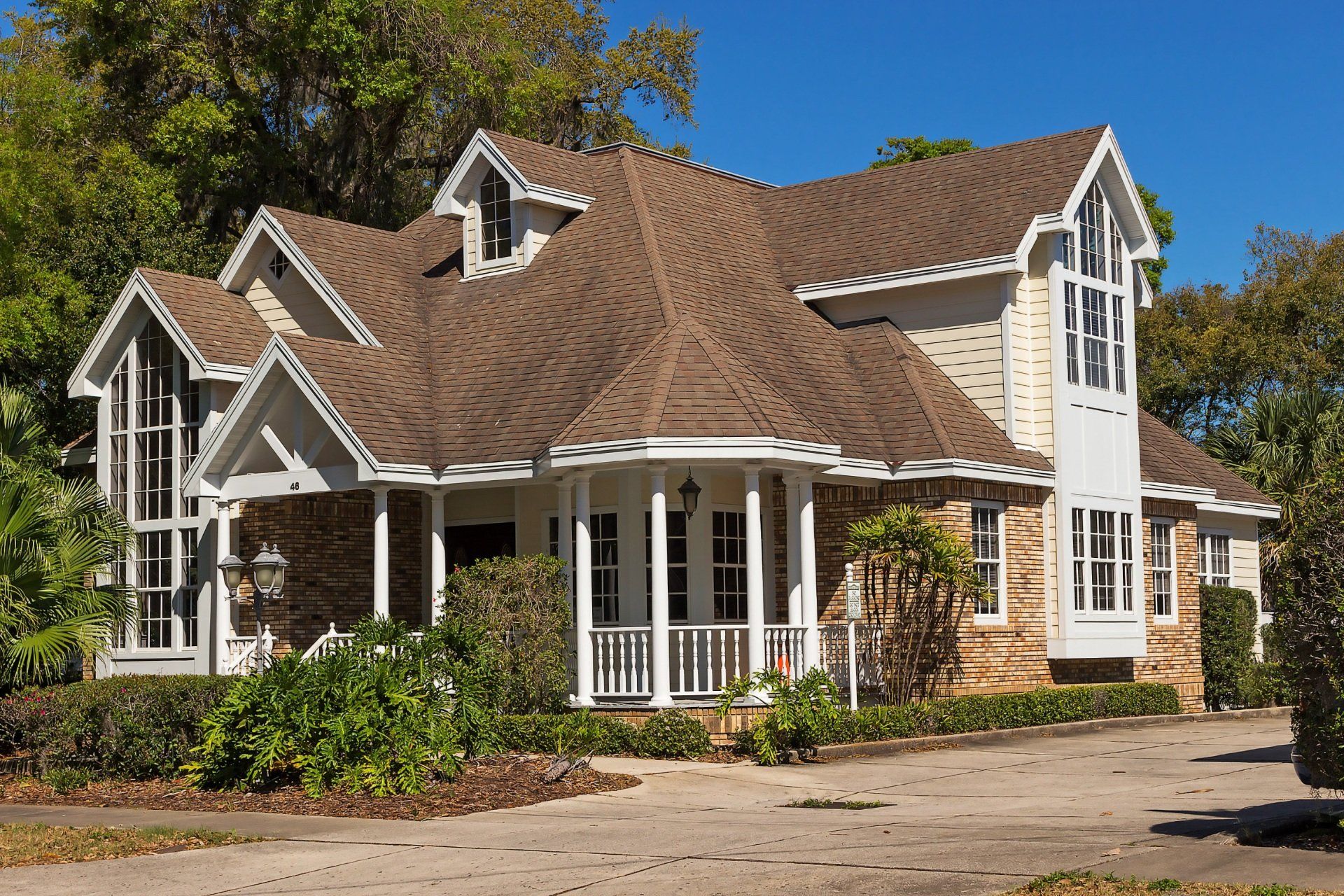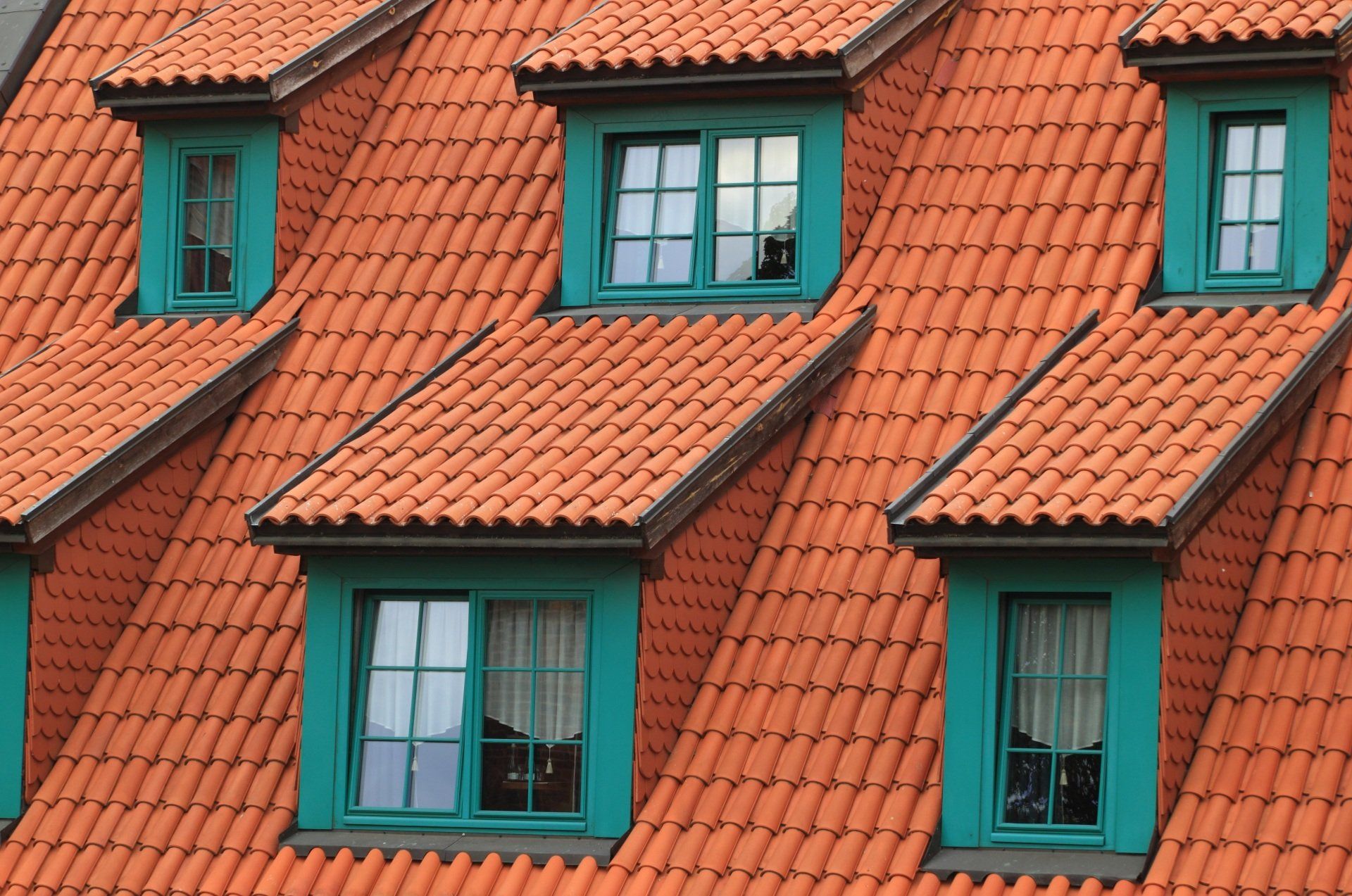Types of Roof Tiles
Types of roof tiles UK
Each type of tile has its benefits and drawbacks, depending on the climate it will be used in. For example, clay tiles are heavy and can crack or break if they are not handled correctly. On the other hand, they are also more stable than most other types of tiling due to their mass. These factors need to be taken into consideration when deciding which types of material would be best for your home. Generally speaking, the materials used depend on what part of the country you live in as well as how much money you want to spend. The two main types are clay tiles and concrete tiles and each have their own pros and cons .
Different types of tiles for roof
You should choose the right type of roof tile depending on the pitch of your roof. Standard tiles are normally used on flatter roofs, pantiles are suitable for areas where rainwater drainage isn't an issue but the curvature helps to make them waterproof all year round, ridge tiles should be used on roofs with steeper slopes or where there's more space between each tile (for example, for a manor house), concrete tiles are stronger than clay ones and offer greater roofing performance as they're long-lasting materials that won't degrade over time. Composite tiles can be used on roofs with pitches between 18° and 90°; these types of roof tiles have a special shape so they can slide over each other and form a water-tight seal between them. This allows you to have the look of a traditional clay tile without having to worry about leaks or drainage problems.
There are countless types and styles of roof tiles available to consider for your roofing project, and which one you choose will depend on a range of factors. You can use this article to help you decide what type would be the best option for your home.
Concrete Roof Tiles
Concrete roof tiles are typically made from sand, small stones, cement powder, and water mixed together before being allowed to dry out or burnt in a kiln. In cold climates where snow can be expected on roofs, these tiles have a low thermal conductivity compared to other types of tiles. This means that they do not absorb heat from the sun as much nor transfer heat through the roof either when it is cold outside. This makes them ideal for colder climates where a lot of rainfall may also be experienced during the winter months. They also come in a variety of patterns, textures, and colors.


Various Designs of Clay Tiles
Clay roof tiles make up around 75% of the UK's domestic tile market, and come in four main types: plain, dimpled/eggshell, ridged/pan-and-cover, and Spanish-style (also known as 'flat').
Plain clay tiles are by far the most common in the UK because they provide an economical solution for homes with high rainfall. They don't have any exposed surface area so water isn't absorbed into them - instead it runs straight off the roof. However, they have a tendency to become slippery during heavy rain, so they shouldn't be used on sloping roofs.
Dimpled/eggshell tiles are embossed with small dimples or 'pips' at their surface which allows more of the water to soak in rather than run off. This reduces the chance of them becoming slippery but they do tend to be more expensive than plain tiles!
Ridged/pan-and-cover tiles have ridges that allow more of the rainwater to seep into them without making them particularly absorbent, and also provide a sound barrier between rooms below and outside noise - great for those who want maximum acoustic insulation from their roof. They can either be fixed over batons felt directly on a solid roof deck, or over battens like standard tiles.
Tiles with metal reinforcement (such as copper and zinc) can be used to provide extra protection (such as for factories) but most people will only use them if they need special permission from their local council. If you're planning on using these then make sure they're made of high quality materials and they've been treated properly before installation - they could corrode otherwise and affect the appearance and durability of your roof.
Granite Roof Tiles
Granite tiles are also made from stone, but granite specifically. They are very strong and dense; this means they can be chipped or cut with ease compared to other stones such as marble. These types of roof tiles tend to last longer than clay and concrete tiles because they will not crack as easily. This tile is often used in colder climates where snowfall is common and rainfall may occur regularly during the winter season. However, they absorb heat much more readily than concrete roof tiles do, meaning that these roofs can become extremely hot when it gets sunny which could prove dangerous for those working on them.

Slate Roof Tiles
Slate roof tiles are another common type of roofing material in the UK. They can last for many decades, and require relatively little maintenance; this makes them an attractive choice. The cost of slate tiles is relatively high, but they are durable and can be recycled at the end of their life, which alleviates some of this expense.
The colour of the slate varies depending on where it came from. There are three types of slate generally available; blue, grey, and black. Blue slate is usually used for projects that involve a great deal of detail or decoration since its colour is easier to match than that of other kinds of stone. Black slate is often preferred because it's very dark, which means that it's not necessary to use any kind of waterproofing material. Grey slate is most commonly used because it's the best compromise, with dark tones but enough detail to look appealing.
Slate tiles are usually laid in an interlocking pattern so they do not need to be held in place by nails or adhesive. Instead, they are sunk into the roofing felt that is installed beneath them. There are some types of slate that slip under one another without locking together, while others must be locked into position by overlapping them slightly and nailing through each tile.
Exquisite Roofing With Composite Roof Tiles
Composite roofing tiles are an alternative to traditional clay, concrete, and slate tiles. Composite roof tiles are made using recycled plastic, rubber, and wood waste. These materials can be formed into tiles that mimic the look of natural materials like
conventional residential and commercial roofing.
It is common for manufacturers of composite roof tiles to use recycled plastics in their products, often in the form of recycled tires. These products are then primed and painted in order to mimic certain roofing styles. Composite roof tiles are made using a variety of materials, including wood pulp or plastic fibers.
These tiles are also an environmentally friendly alternative because they are made using residual by-products of other manufacturing processes.
There are benefits to using composite roof tiles in addition to their environmental friendliness. Composite roof tiles last longer than conventional roofing material because they protect against algae, mildew, and rot. They also absorb less heat than asphalt or wood-based products, which means that the interior of the building stays cooler during hot weather.
Although these tiles are effective at dealing with the heat, they are also highly reflective, so during colder seasons, they can help maintain warmth in the building.
On top of being environmentally friendly and long lasting, composite roof tiles come in a wide range of colours and shapes that allow for flexibility in design. They are very resistant to damage from hail and resist even the most severe storms. In areas with high winds, this can provide a sense of reassurance.


